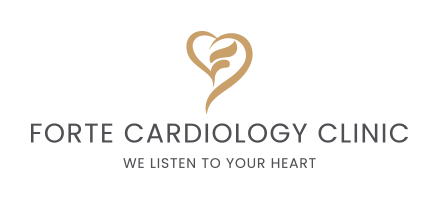Arrhythmia is an abnormal heart rhythm that may manifest as irregular heartbeats, too fast (tachycardia), too slow (bradycardia), or an irregular combination of both. This condition disrupts the heart’s natural electrical impulses, affecting its ability to pump blood efficiently. Arrhythmias can occur in the heart’s atria (upper chambers) or ventricles (lower chambers) and can be a temporary or chronic condition.
Importance of Managing Arrhythmia
Managing arrhythmia is of paramount importance due to its potential to lead to serious complications, including heart failure, stroke, or sudden cardiac arrest. A normal heart rhythm is essential for maintaining optimal blood circulation; any deviation from this rhythm can significantly impact cardiovascular health. Timely and effective management of arrhythmias can mitigate the risk of associated complications, improve the patient’s quality of life, and enhance overall cardiac well-being.
Overview of Arrhythmia Management
Arrhythmia management involves a multifaceted approach, incorporating lifestyle modifications, medications, medical procedures, and, in some cases, surgical interventions. The specific management strategy depends on the type of arrhythmia, its underlying causes, and the patient’s overall health.
Diagnosis of Arrhythmia
Medical History and Physical Examination
Arrhythmia diagnosis typically begins with a comprehensive medical history and physical examination. Understanding the patient’s symptoms, medical history, lifestyle factors, and any underlying conditions. Additionally, a thorough physical examination helps healthcare providers assess signs of arrhythmia, such as irregular heart sounds or abnormal pulsations, which can guide further diagnostic investigations.
Electrocardiogram (ECG or EKG)
The Electrocardiogram (ECG or EKG) is a fundamental tool for diagnosing arrhythmias. This non-invasive test records the heart’s electrical activity and provides a graphical representation of the heart’s rhythm. It involves placing electrodes on the skin to measure the electrical impulses travelling through the heart. An ECG helps identify various arrhythmias, including atrial fibrillation, atrial flutter, and ventricular tachycardia, by capturing the heart’s electrical patterns during normal and abnormal rhythms.
Holter Monitor and Event Recorder
Holter Monitor – A Holter monitor is employed for arrhythmias that may not occur consistently. This portable device records the heart’s electrical activity over an extended period, typically 24 to 48 hours, while the patient goes about their daily activities. This allows healthcare providers to capture intermittent arrhythmias that may not be evident during a brief ECG.
Event Recorder – Like a Holter monitor, an event recorder is used for sporadic arrhythmias. However, patients activate the recorder when they experience symptoms. This helps in capturing specific episodes of irregular heartbeats for closer analysis.
Blood Tests and Imaging Tests
Blood Tests – Blood tests can provide valuable information about the heart’s overall health and potential underlying conditions contributing to arrhythmias. Specific biomarkers, such as troponin and brain natriuretic peptide (BNP), may be measured to assess cardiac function and detect myocardial damage.
Echocardiogram – This non-invasive test uses ultrasound waves to create detailed images of the heart’s structure and function. It helps identify structural abnormalities, such as valve disorders or congenital heart conditions, which may contribute to arrhythmias.
MRI (Magnetic Resonance Imaging) – In some cases, an MRI may be used to obtain detailed images of the heart and blood vessels, aiding in diagnosing structural heart diseases associated with arrhythmias.
CT (Computed Tomography) Scan – CT scans may be employed to visualise the heart and blood vessels, providing detailed cross-sectional images to help identify abnormalities contributing to arrhythmias.
Lifestyle Modifications
Importance of a Healthy Diet
Consuming a heart-healthy diet is paramount for managing arrhythmia. Prioritising fruits, vegetables, whole grains, and lean proteins while limiting saturated and trans fats contribute to cardiovascular well-being. These choices provide essential nutrients, antioxidants, and fibre, promoting heart health and helping to minimise the risk of irregular heartbeats associated with arrhythmia.
Regular Physical Activity
Engaging in regular, moderate-intensity exercise is a crucial component of managing arrhythmia. Physical activity enhances blood circulation, reduces stress, and improves overall well-being. Following healthcare providers’ recommendations, aiming for at least 150 minutes of moderate-intensity aerobic exercise or 75 minutes of vigorous-intensity exercise per week ensures a balanced approach to fitness while considering individual health conditions.
Stress Management Techniques
Stress can trigger arrhythmias, emphasising the importance of stress management techniques in overall well-being. Incorporating deep breathing exercises, meditation, mindfulness, and yoga helps individuals cope with stress and promotes relaxation. These techniques contribute to managing arrhythmias and enhance mental and emotional resilience.
Limiting Caffeine and Alcohol Intake
Mindful consumption of caffeine and alcohol is advised for individuals managing arrhythmias. While moderate caffeine intake is generally considered safe, excessive amounts can contribute to irregular heartbeats. Similarly, limiting alcohol consumption to moderate levels following guidelines provided by healthcare professionals helps reduce the risk of triggering arrhythmias. When tailored to individual health needs, these lifestyle adjustments contribute to a practical and holistic approach to managing arrhythmias and promoting heart health.
Medications for Arrhythmia Management
Antiarrhythmic Drugs
Antiarrhythmic drugs are crucial in managing arrhythmias, aiming to regulate and stabilise the heart’s rhythm. Several classes of antiarrhythmic drugs are utilised, each targeting specific mechanisms of abnormal heartbeats.
Beta-Blockers – Beta-blockers, such as metoprolol and propranolol, work by blocking the effects of adrenaline, reducing heart rate, and lessening the force of contractions. This class of drugs is effective in controlling tachycardias and is commonly prescribed for conditions like atrial fibrillation and ventricular tachycardia.
Calcium Channel Blockers – Calcium channel blockers, like verapamil and diltiazem, inhibit calcium influx into the heart muscle cells. This action slows the heart rate and can be particularly useful in treating certain types of atrial arrhythmias
Sodium Channel Blockers – Sodium channel blockers, including flecainide and propafenone, target the sodium channels in the heart cells, affecting the conduction of electrical impulses. These drugs are often prescribed for specific atrial and ventricular arrhythmias.
Anticoagulants for Stroke Prevention
For individuals with atrial fibrillation or other high-risk arrhythmias, there is an increased risk of blood clot formation, leading to stroke. Anticoagulants are prescribed to prevent these clots and reduce the risk of stroke.
Importance of Medication Adherence
Adherence to prescribed medications is critical for the successful management of arrhythmias. Skipping doses or discontinuing medication without consulting healthcare providers can lead to uncontrolled arrhythmias and an increased risk of associated complications.
Regular follow-up appointments are essential to monitor the effectiveness of the medications and make any necessary adjustments. Patients are encouraged to communicate openly with their healthcare team about any concerns or side effects, fostering a collaborative approach to optimise the benefits of medication therapy.
Medical Procedures and Interventions for Arrhythmia Management
Cardioversion
Cardioversion is a medical procedure to restore the heart’s normal rhythm in individuals experiencing certain arrhythmias, particularly atrial fibrillation or atrial flutter. This can be achieved through two methods: electrical cardioversion, where a controlled electric shock is delivered to the heart, or pharmacological cardioversion, using medications. The goal is to synchronise the heart’s electrical activity and promote a regular rhythm.
Catheter Ablation
Catheter ablation is a minimally invasive procedure to treat specific arrhythmias, particularly those arising from abnormal electrical pathways in the heart. A thin, flexible tube (catheter) is threaded through blood vessels to the heart during the procedure. Through the catheter, heat or cold energy is applied to the targeted areas to create scar tissue, interrupting the abnormal electrical signals and restoring a normal heart rhythm.
Implantable Cardioverter-Defibrillator (ICD)
An Implantable Cardioverter-Defibrillator (ICD) is implanted under the skin, usually near the collarbone, with leads threaded into the heart. It monitors the heart’s rhythm continuously and delivers electric shocks when dangerous arrhythmias, particularly ventricular tachycardia or fibrillation, are detected. ICDs act as a safeguard against sudden cardiac arrest, providing life-saving interventions when needed.
Pacemaker Implantation
Pacemaker implantation involves inserting a small electronic device under the skin, typically in the chest area, connected to the heart with leads. Pacemakers regulate heart rate in individuals with bradycardia (abnormally slow heart rate) or certain types of heart block. The device monitors the heart’s electrical activity and, when necessary, sends electrical impulses to maintain a steady and appropriate heart rate.
Monitoring and Follow-Up for Arrhythmia Management
Regular Check-ups with a Cardiologist
Regular check-ups with a cardiologist are essential components of effective arrhythmia management. These appointments allow healthcare providers to assess the patient’s overall cardiovascular health, review the effectiveness of the treatment plan, and make any necessary adjustments.
Cardiologists can monitor the patient’s progress through routine check-ups, detect any emerging issues, and ensure that the chosen management approach aligns with the individual’s evolving health needs.
Importance of Continuous Monitoring
Continuous monitoring is crucial for individuals with arrhythmias, especially those with intermittent symptoms or varying heart rhythms. Technologies such as ambulatory monitors, Holter monitors, or event recorders allow for extended heart rhythm monitoring beyond the confines of a clinic.
Continuous monitoring helps capture irregularities that may not be evident during a standard office visit, aiding healthcare providers in making informed decisions about adjustments to medication, interventions, or other aspects of the treatment plan.
Adjustments in Treatment Plan as Needed
The dynamic nature of arrhythmias requires a proactive approach to treatment. Regular monitoring enables healthcare providers to promptly identify patient condition changes. Depending on the findings, adjustments to the treatment plan may include modifying medication dosages, exploring new medications, or considering additional interventions such as catheter ablation or device adjustments.
This adaptive strategy ensures that the management plan remains tailored to the patient’s evolving health status, optimising the long-term outcomes and minimising potential complications.







